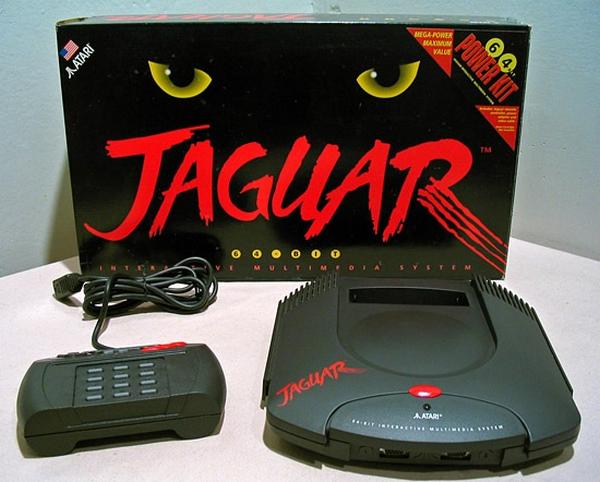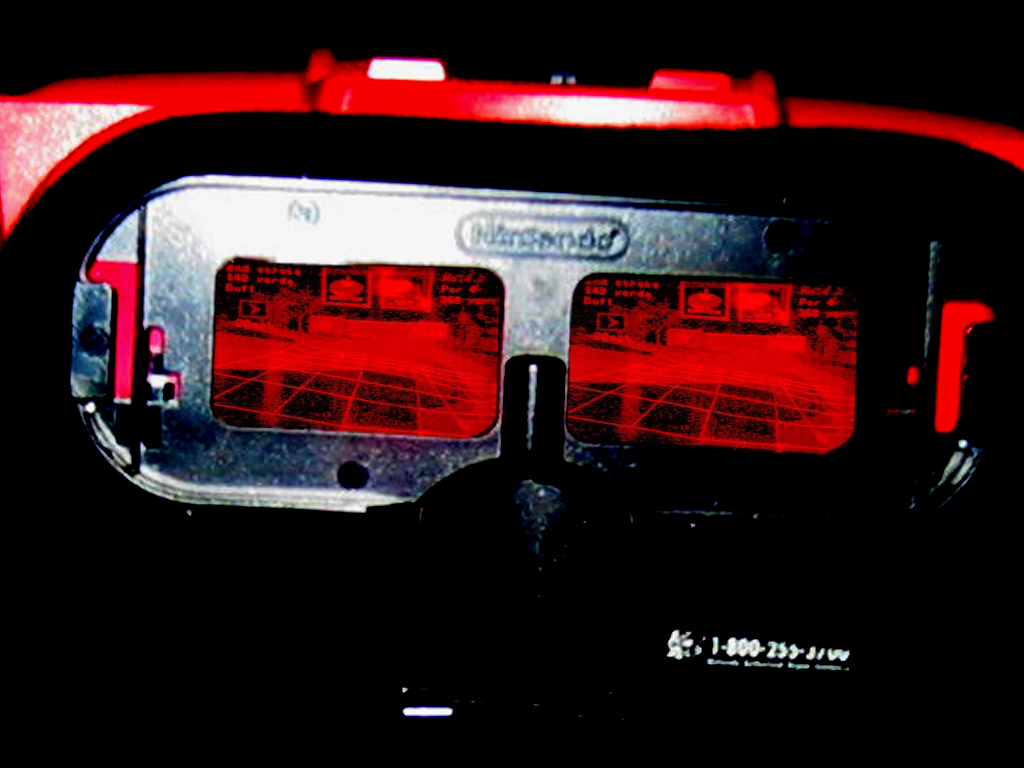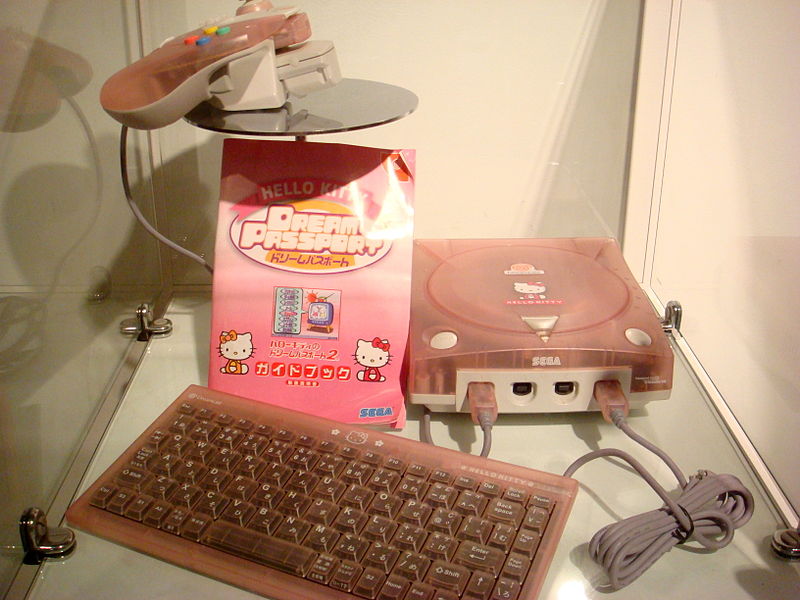With the surge in consoles this year, from the PS4 and Xbox One launches later this year, to appearances by everything from the Nvidia Shield to the Ouya, it might be time to look back on all the consoles that didn't make it, the ones that have been cast into history and the oddities bin at Goodwill.
The consoles that failed. Whether for being too innovative for their time, having poor marketing, or simply having no games, all of these consoles have been defined by their inability to succeed.
Milton Bradley Vectrex (1982)
The Vectrex was an interesting idea. It was a cartridge based console, but it came with it's own 9-inch CRT monitor. The reason for this was to display vector graphics, and also so that it wouldn't hog up a television.
The Vectrex was actually successful for the first holiday season, but ended up failing in what has come to be known as the video game crash of 1983. That was a situation where there was a bunch of different consoles flooding the market, and a few companies failed to produce successful machines during this time.
The Vectrex had a few problems. For one, it could only display black and white. The solution for this was to supply overlay sheets that changed the color of the games by putting film across the screen.
There were 54 games for the Vectrex, many of them arcade ports. One game was actually included in the console, an Asteroids clone called Mine Storm.
Interestingly enough, since it's failure in 1984, the Vectrex has seen a bit of a resurgence in game creation. In the mid 1990's, the Vectrex product line was put into public domain and as recently as 2011, people have been manufacturing games for the failed console.
Atari 7800 (1986)
The Atari 7800 was supposed to be released in 1984. That really sums up a lot of the reasons the console failed. I mean that statement quite literally -- the 7800 was sitting in a warehouse for two years while contractual issues were being sorted out due to Atari being purchased by a man named Jack Tramiel (a man considered responsible for the Commodore 64).
The console's hardware was inferior to other consoles of the time like the NES and the Sega Master System. All of the peripherals were cancelled, and instead of creating new launch titles for the '86, it only had the titles from '84.
The marketing budget for the 7800 was only $300,000, and Atari had trouble finding developers that hadn't secured exclusivity contracts with Nintendo.
One bright spot for the 7800 was the backwards compatibility with the 2600, which opened up a library of games. However, less than 100 titles were made for the new console and it's considered by many to be the first death knell for the brand as a whole.
Turbografx 16 (1989)
The Turbografx was a system that is actually known for having really good games, like Castlevania: Rondo of Blood. But the system was plagued with a couple of major issues that ultimately led it to being considered a console failure.
For one, the systems' best games were only available using the CD attachment. The peripheral for the system wasn't available outside of major US cities, and cost around $400 when it debuted. This was exceptionally expensive at the time, and still is. Unfortunately, a lot of the games that were so popular overseas were 1) only available on the CD attachment and 2) not available in the US.
Third party support was also fairly negligible, since many software companies had exclusivity deals with companies like Nintendo. The console was discontinued in 1994.

Atari Jaguar (1993)
Atari can be considered one of the fathers of console gaming. After all, the Atari 2600 is the classic home arcade machine. But the Atari Jaguar was the final console released by the manufacturer, and for good reason.
The first would be that thing on the left. That's the Jaguar's controller. While many consoles were still trying to figure out the D-Pad and other variations on controllers, that brick is probably the worst "solution" you can find to controller issues. Just holding it should've been enough to justify not shipping.
There were a few other problems. The console was advertised as 64-bit and a graphic powerhouse, but a lot of the games looked better on supposedly lower quality machines. This was because some of the internal architecture was actually 32-bit.
Another selling point for the Jaguar was the supposed game library, but there were only 55 games, and many of them were just ports and only 20 of them were from third party studios who found the system to be incredibly unmanageable to program for.
The Jaguar drove the company to bankruptcy in 1995, and only a few hundred thousand units were ever shipped.
Panasonic 3Do (1994)
Named by Time Magazine as "1994's Product of the Year," featuring cutting edge CD technology, and created by EA founder Trip Hawkins, the 3DO should've been a success.
Except for one tiny thing. It cost $699 at launch. Which is more than a PS4 or Xbox One.
The 3DO separated the hardware and software development into two different companies. A lot of console companies sell their console at a loss, knowing that they will recoup the cost of the console in the sale of games. However, the 3DO didn't have an opportunity to do that. In order to make money off of the hardware, the developers had to charge an exorbitant price.
With a limited library, almost no third party support, and with consumers unable to justify the price tag, the 3DO was discontinued in 1996 after selling only 2 million units.
Sega Saturn (1994)
The Sega Saturn didn't bomb as hard as some of the consoles on this list, and had a few things going for it. It sold 9.4 million units worldwide, but 6 million of those units were in Japan. The US version only sold about 2 million, and it didn't hold the market the way it's competitors at the time, the Playstation and the N64, did.
Some feel that Sega shot itself in the foot, because shortly after the release of the Saturn, they started talking about the Dreamcast, which wasn't released until 1999. Developers were turned off by the idea of Sega ditching their system so close to it's initial launch and stopped making games for it.
Planned games never made it to launch, and the console's life expectancy was drastically shortened as a result. Though many of the games from the Sega Saturn are remembered fondly, they couldn't hold up the failing console in the US.

Nintendo Virtual Boy (1995)
If you've had a chance to get your hands on an Oculus Rift, you know what Virtual Boy was trying to do. Unfortunately pushed through development so that Nintendo could finish the N64, the Virtual Boy was destined to fail.
The Virtual Boy was the brainchild of Gunpei Yokoi, a name you might not recognize. He was the general manager of Nintendo's R&D, and is the man who is responsible for the Game Boy and the inventor of the modern D-Pad. It should have worked, and Gunpei viewed it as a way to give Nintendo a reputation as an innovator. It was Nintendo's first 32 bit system. Despite this pedigree though, the Virtual Boy was rushed through production, and as such had some major issues.
For one, it wasn't real 3D, it was a parallax illusion, and some of it's games like Mario Tennis, which utilized that 3D effect, were exceptionally difficult because of that. Also, it only had 22 games released worldwide, with 14 of those released in the United States. The console was too expensive (at $180) and not portable at all. Also, in probably one of the worst decisions, the only color you could get your games in was red.
Nowadays, the Virtual Boy is effectively just an oddity. Less than 1 million units of the device were ever sold, and the device was discontinued 1996.
Sega Dreamcast (1998)
There are a lot of reasons the Dreamcast shouldn't be on this list. For one, it was relatively innovative for it's time. A few games for the Dreamcast are still happily regarded by fans, including Shenmue. The Dreamcast is the first console to include a built in modem and Internet support for online play. PC Magazine chose the Dreamcast as the best console ever. It even initially had great sales.
So what killed it?
A few things. For one, customer fatigue over the failed Sega Saturn. Third party support was difficult to find, and publishers like EA actually refused to support the Dreamcast. Sega had to produce it's own sports games, which it did rather well with launches from Sega Sports.
Then Sony announced the launch of the Playstation 2, and promised a lot of things that the Dreamcast already had. While Sony didn't quite deliver, this still resulted in poor sales for the Dreamcast. Even with Sony shipping late for Christmas, and in fact some consumers not getting their PS2 until March of the next year, consumers still wouldn't buy the Dreamcast.
Sega's poor sales of the Dreamcast resulted in $412 million net loss in 2000, and they discontinued the Dreamcast in 2001. The Dreamcast is still fondly remembered, and some independent companies still make games for it.

So what is your favorite failed console? Did you buy one of these entries from the console graveyard?






Published: Jul 24, 2013 12:09 pm